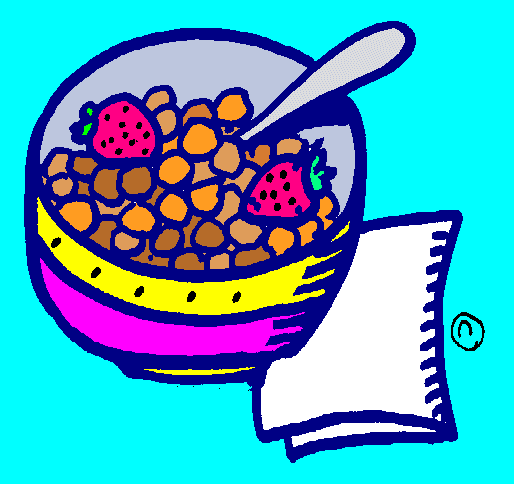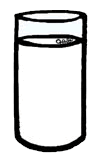[Introduction] [Roles] [Task] [Process] [Evaluation] [Resources]
[Roles] [Top of Page]
To successfully complete this Quest you will need to work cooperatively in groups of four. Each student in the group will need to assume one of the four roles.
Role 1: Gardener. Your specialty is fruits and vegetables. As the gardener, you will seek out nutritious foods from the fruit group and vegetable group to contribute to your group's meal.
Role 2: Butcher. Your focus is meat. You will find nutritious foods from the meat group to add to your group's meal.
Role 3: Baker. You specialize in grains. It is your job to locate nutritious foods for your group's meal that fall into the grain group.
Role 4: Dairy Farmer. As the dairy farmer, you specialize in milk products. You will use your expertise to find nutritious milk products to contribute to the group's meal.
[Task] [Top of Page]
1. Identify the main food groups and the number of servings
needed daily from each group.
2. Find out what qualifies as a serving in each group.
3. Make a menu consisting of the recommended servings from all the food groups.
[Process] [Top of Page]
I. Gardener
A. Identify the main food groups
and the number of servings needed daily from each group.
1. You have identified two of
the main food groups--fruits and vegetables. You will find out what the other
groups are and more information about them later from your other group members.
Now you need to become an expert on fruits and vegetables. Click on the fruits
and veggies below to visit web sites about these two groups. When you feel like
an expert, click the back arrow to come back here. When you have been to all
the sites, go on to the next step.
B. Find out what qualifies as a serving in each group.
2. Now that you know more about the fruit and vegetable
food groups, you need to find some examples of foods that make up servings in
these two groups. Click on the strawberries below. When you come to the servings
page, scroll down until you find the vegetable section and then the fruit section.
Read each of them and write them down so that you can use them later when your
group makes a meal. Then click the back arrow to return to this page, and go
on to the next step.

3. Now it is time for you to get back together with your group! Scroll down to the group process for the instructions for your group project.
II. Butcher.
A. Identify the main food groups and the number of servings
needed daily from each group.
1. You have identified one of
the main food groups--the meat group. You will find out what the other groups
are and more information about them later from your other group members. Now
you need to become an expert on meat. Click on the meat below to visit web sites
about this group. When you feel like an expert, click the back arrow to come
back here. When you have been to all the sites, go on to the next step. Hint:
When you click on the sausage, you will go to a page on both milk and meat.
You only need to read the section on meat.

![]()
B. Find out what qualifies as a serving in each
group.
2. Now that you know more about the
meat food group, you need to find some examples of foods that make up servings
in this group. Click on the steak below. When you come to the servings page,
scroll down until you find the meat section. Read each of them and write them
down so that you can use them later when your group makes a meal. Then click
the back arrow to return to this page, and go on to the next step.

3. Now it is time for you to get back together with your group! Scroll down to the group process for the instructions for your group project.
III. Baker.
A. Identify the main food
groups and the number of servings needed daily from each group.
1. You have identified one of
the main food groups--the grain group. You will find out what the other groups
are and more information about them later from your other group members. Now
you need to become an expert on grains. Click on the grains below to visit web
sites about this group. When you feel like an expert, click the back arrow to
come back here. When you have been to all the sites, go on to the next step.


B. Find out what qualifies as a serving in each group.
2. Now that you know more about
the grain food group, you need to find some examples of foods that make up servings
in this group. Click on the cereal below. When you come to the servings page,
scroll down until you find the grains section. Read each of them and write them
down so that you can use them later when your group makes a meal. Then click
the back arrow to return to this page, and go on to the next step.

3. Now it is time for you to get back together with your group! Scroll down to the group process for the instructions for your group project.
IV. Dairy Farmer.
A. Identify the main food groups and the number
of servings needed daily from each group.
1. You have identified one of
the main food groups--the dairy group. You will find out what the other groups
are and more information about them later from your other group members. Now
you need to become an expert on dairy products. Click on the dairy products
below to visit web sites about this group. When you feel like an expert, click
the back arrow to come back here. When you have been to all the sites, go on
to the next step. Hint: When you click on the cheese, you will go to a page
on both milk and meat. You only need to read the section on milk.


B. Find out what qualifies
as a serving in each group.
2. Now that you know more about the dairy food group,
you need to find some examples of foods that make up servings in this group.
Click on the yogurt below. When you come to the servings page, scroll down until
you find the dairy section. Read each of them and write them down so that you
can use them later when your group makes a meal. Then click the back arrow to
return to this page, and go on to the next step.

3. Now it is time for you to get back together with your group! Scroll down to the group process for the instructions for your group project.
Group Process:
C. Make a menu consisting of the recommended servings from all the food groups.
As a group you will follow three steps to make your menu complete:
1. Complete the worksheet below to help you identify combination foods that you can use in your meal. Click on the link below and scroll down to Level 4. Click on Making Great Combinations. Print off this worksheet and fill it out as a group.
www.healthychoices.org/ch1/pdfdownload.html
2. Click on the link below. Scroll down until you come to Activity #2: Planning a Menu. Click on this option and print off the worksheet. Complete this worksheet as a group using the information from your first worksheet to make a balanced menu for breakfast, lunch, and dinner.
www.healthychoices.org/act-kit/toc.html
3. You now have the option of creating a PowerPoint presentation to display your menu.
[Evaluation] [Top of Page]
|
Excellent
|
Fair
|
Poor
|
|
| Gathering Information | Gathered the correct information efficiently. | Gathered some of the correct information. | Gathered incorrect information. |
| Worksheet 1 | Completed the worksheet correctly. | Completed some of the worksheet correctly. | Completed the worksheet incorrectly. |
| Worksheet 2 | Completed the worksheet correctly. | Completed some of the worksheet correctly. | Completed the worksheet incorrectly. |
| Group Work | Worked cooperatively with the group and did his/her share. | Worked cooperatively with the group or did his/her share. | Did not work cooperatively with the group or do his/her share. |
| Menu | Made a balanced meal with the correct number of servings. | Made a balanced meal or used the correct number of servings. | Did not make a balanced meal or use the correct number of servings. |
| PowerPoint (optional) | Made a clear presentation of the information found. | Made a somewhat clear presentation of the information found. | Made an unclear presentation of the information found. |
[Resources] [Top of Page]
Web Sites:
www.keepkidshealthy.com/nutrition/food_guide_pyramid.html
www.ring.com/health/food/FOOD.htm
www.dole5aday.com
www.healthychoices.org/ch1/pdfdownload.html
www.healthychoices.org/act-kit/toc.html
www.familyfoodzone.com/pyramid/combo_foods.html
www.kidshealth.org/kid/stay_healthy/food/pyramid.html
Books:
Good enough to eat : A Kid's Guide to Food and Nutrition
by Lizzy Rockwell
Recipes for Kids
compiled by Virginia
V. Renoudet